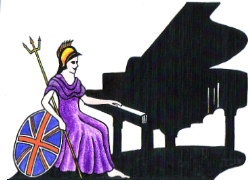Learn to Play the Piano Make Music
Piano Teacher in Morningside City of Edinburgh, Edinburgh EH10

UK Piano Page


I am passionate about musical expression, and teach a relaxed technique that allows the pupil to access his or her inbuilt musical sense.
My teaching is based around the principles of the teacher and pedagogue Tobias Mattay, who advocated use of the weight of the arm to get the best possible tones; controlled and economical finger movement; and a flowing wrist for the management of gravity.
I teach for ABRSM and Trinity grade and diploma exams if the pupil asks for them. The approaches I use can be applied to Classical or general styles, and because they are so musically effective I have had a high proportion of merits and distinctions from pupils in exams. But the creation and enjoyment of music are the most important thing.
I also teach theory of music for the ABRSM exam syllabus.
I have the Disclosure Scotland (enhanced) certificate.
Disclosure and Barring Service: yes
Qualification: BA, ATCL, LTCL
Disclosure and Barring Service: yes
Qualification: BA, ATCL, LTCL
Hampstead, London
England
Experienced piano teacher and accompanist
Great Harwood, Lancashire
England
I teach piano & violin from my own home in Great
Music Festival for performers and guests Our 10th
18-06-2022 12:30PM
The Morecambe Bay Piano Group was set up to extend
11-12-2021 01:00PM
The Morecambe Bay Piano Group was set up to extend
08-01-2022 01:00PM
The Morecambe Bay Piano Group was set up to extend
12-02-2022 01:00PM
Muzio Clementi
Muzio Clementi 23 January 1752 to 10 March 1832 was an Italian-born British composer, pianist, pedagogue, conductor, music publisher, editor, and piano manufacturer. who was the son of a silversmith? the piano firm Clementi eventually became Collard and Collard.
He was encouraged to study music by his father, Muzio was sponsored as a young composer by Sir Peter Beckford who brought him to England to advance his studies in music. Later, he toured Europe numerous times from his long-standing base in London. It was on one of these occasions, in 1781, that he engaged in a piano competition with Wolfgang Amadeus Mozart. Clementi published a highly respected piano method which even Beethoven endorsed him, sending pupils along to Clementi.